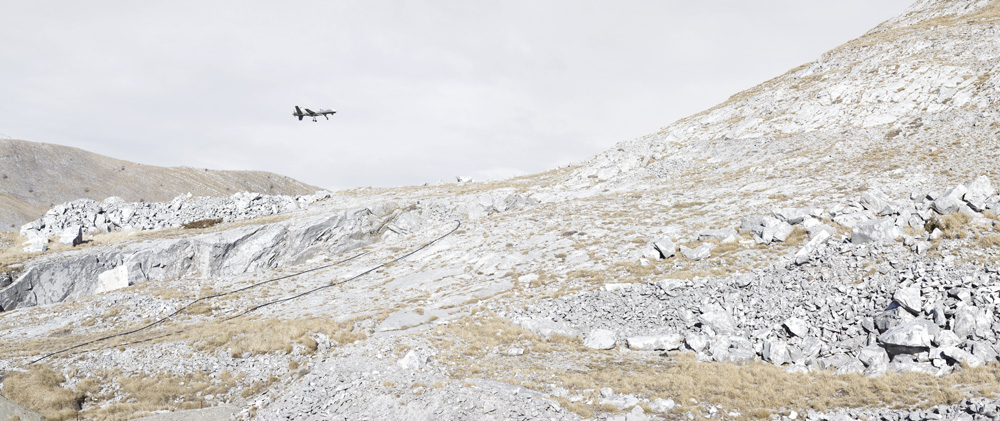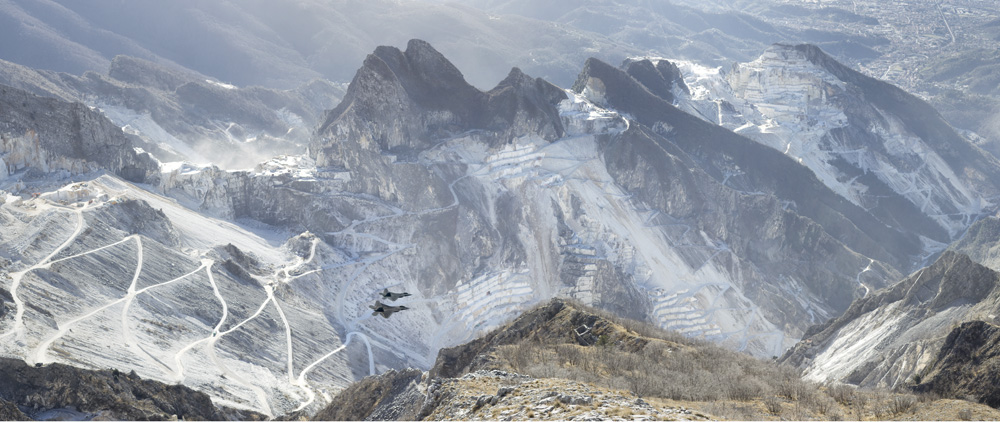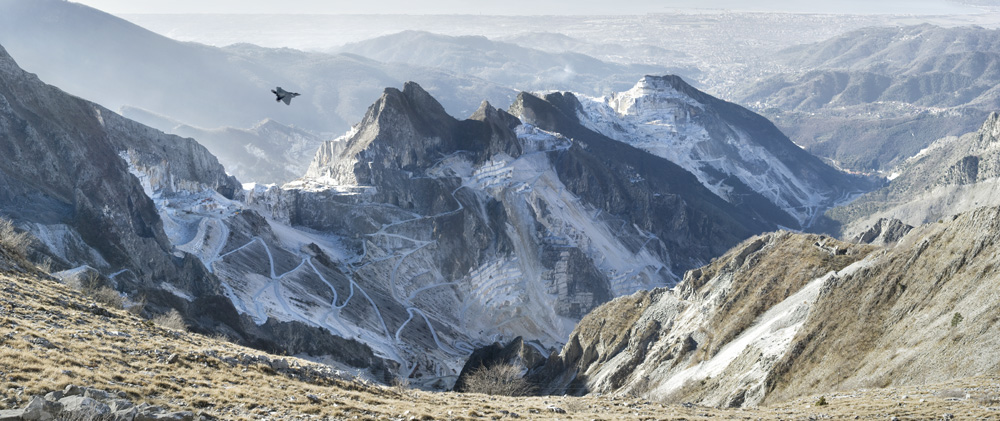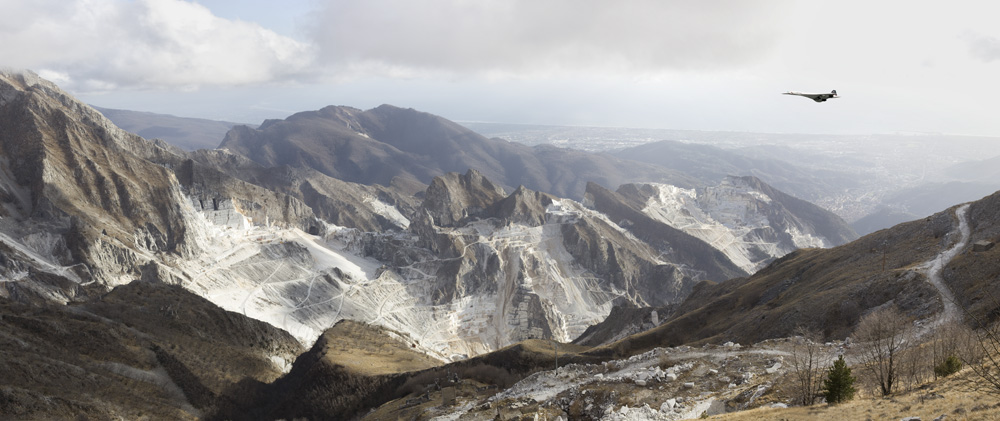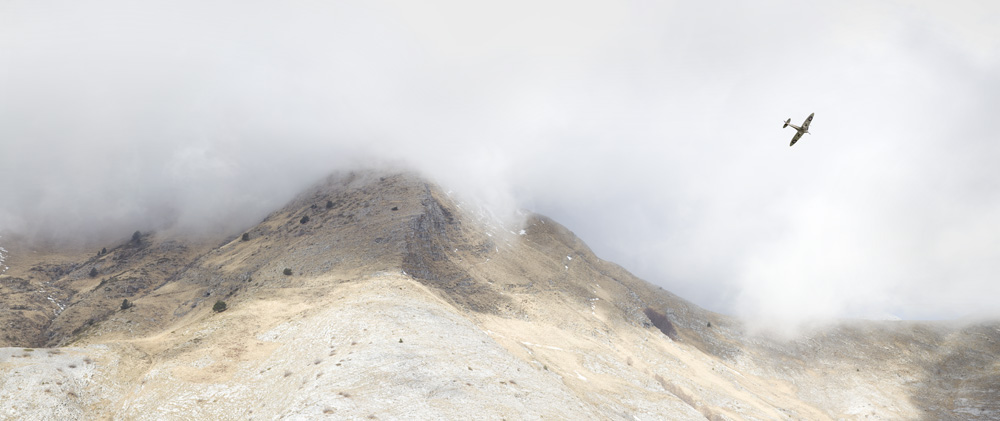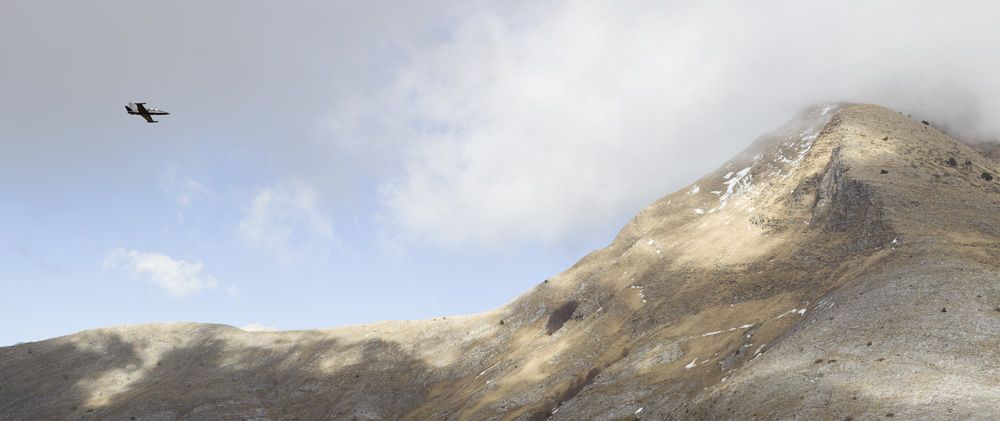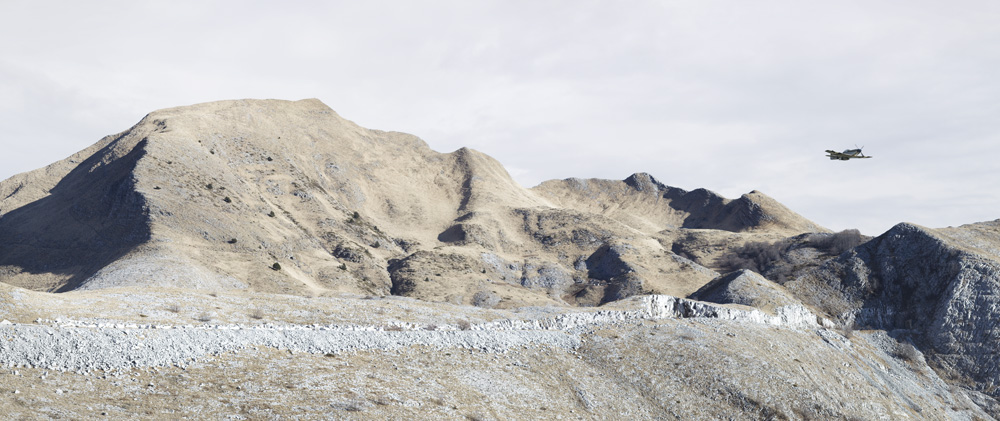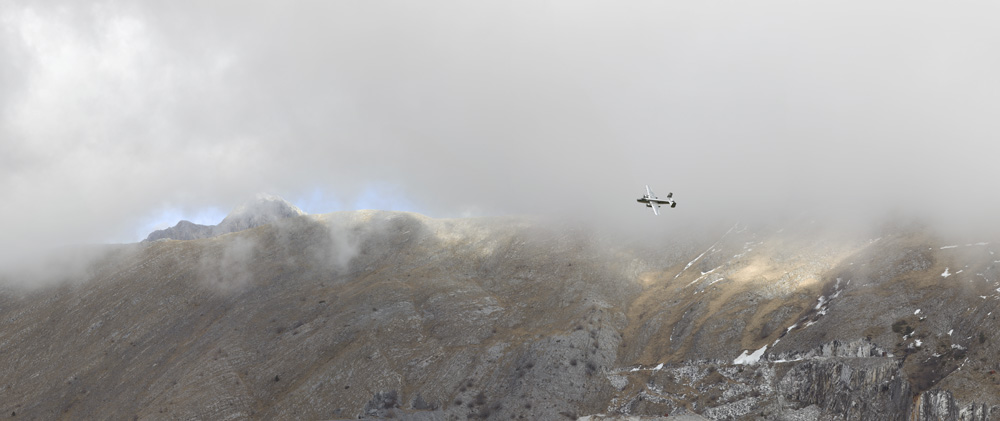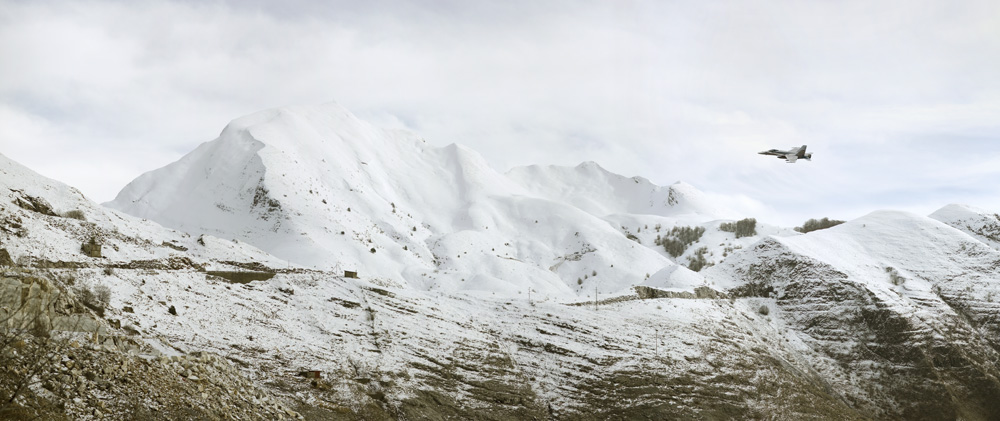A Break in the Sublime
A majestic vista unfolds as far as the eye can see. Tuscan hills, dappled with snow and caressed by wispy cloud, lie still and unending; our human presence but a fleeting dance in the epic duration considered by this timeless landscape. How does one create a memory of such landscape, awe‐inspiringly still, yet geologically speaking, rapidly changing and becoming? In 1764, Immanuel Kant described the phenomenon of encountering something sublime, for example seeing something large and powerful like a storm or a range of mountains. Kant believed the resulting feeling would be countered by one’s cognition, which ultimately resolved into a pleasant emotional surge. But it is more than pleasant, as Kant said, ‘[t]he sublime moves, the beautiful charms. […] The sublime […] is sometimes accompanied with a certain dread, or melancholy; in some cases merely with quiet wonder.’ [1]
Albrecht Tübke’s compositions, however beautiful they may be, contain the ‘punctum’ of movement which seeks to update this timelessly construed sublime in the most contemporary of terms. Just when our perception of the landscape hovers on the cusp of memory, the embodiment of duration is shattered by the arrival of a flying object. Caught suspended in mid-‐flight, these planes are at various altitudes, flying dangerously low, vertiginously angled and disruptively still – how can they not be moving – arrested in midflight. The image Tübke presents holds multiple layers of duration, that of the instant where the plane zooms by, that of the gentle afternoon spent looking at the hills, the generations of mining being carried on in the quarry below, enveloped in the duration of the landscape itself, with tectonic shifts invisible through Tuebke’s shutter, yet rapidly changing in geological time.
It has been saidthat the photograph has no memory; rather it is the material manifestation of memory itself.[2] The camera records time and makes it physical, capturing time moving instantly into the past like memory is created from present perception. What is our memory of this place? Undoubtedly our eye is drawn to the flying object, guessing its trajectory and the ear‐splitting sound it would make in this otherwise tranquil landscape. Movement and sensory input anchor the viewer’s physical experience of a place, and in this way, implicate the body as host to memory. Our memory of this event would undoubtedly involve the cumulative time spent watching the plane pass, perhaps not frozen in an instant. Will we remember the sublime? Tübke has adjusted the viewer’s eyes to a new frequency, arresting eternity with motion of the flying intruder, and in this way, exposing a cross section of memory forever impossible to conceive with the eye.
Christiane Pratsch Monarchi

